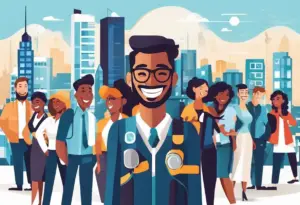Avoid Mistakes: Common Pitfalls in Website Development

Hey everyone! Let’s talk about making websites. Building a website is like putting together a big puzzle where every piece needs to fit just right. It’s important because it helps people find what they need and enjoy using your site.
We all know looking good matters, but on the web, it’s even more than that. You want your visitors to move around your site easily and find things without getting lost. Did you know that if your website looks bad on phones or tablets, people might not come back? Plus, if things take too long to load or don’t work on all browsers, that can make folks leave too.
It gets really serious when we think about safety online – keeping everybody safe from hackers is super important. And guess what? The world is full of different people speaking different languages; making sure they all feel welcome on your site means thinking about their words and cultures.
There are some cool ways to build websites now that help you avoid these problems. We’ll show how design thinking can make everything better by planning ahead and choosing the right tools for the job.
And hey, did you know that being friends with search engines by using special keywords can bring more visitors to your site? There’s also this neat thing called analytics where numbers tell you how awesome (or not) your website is doing so you can keep improving it.
Getting all of this right makes sure everyone who visits has a great time and wants to come back or do business with you!
Let’s get ready to dodge those common slip-ups in website development!
Understanding the Importance of Web Design
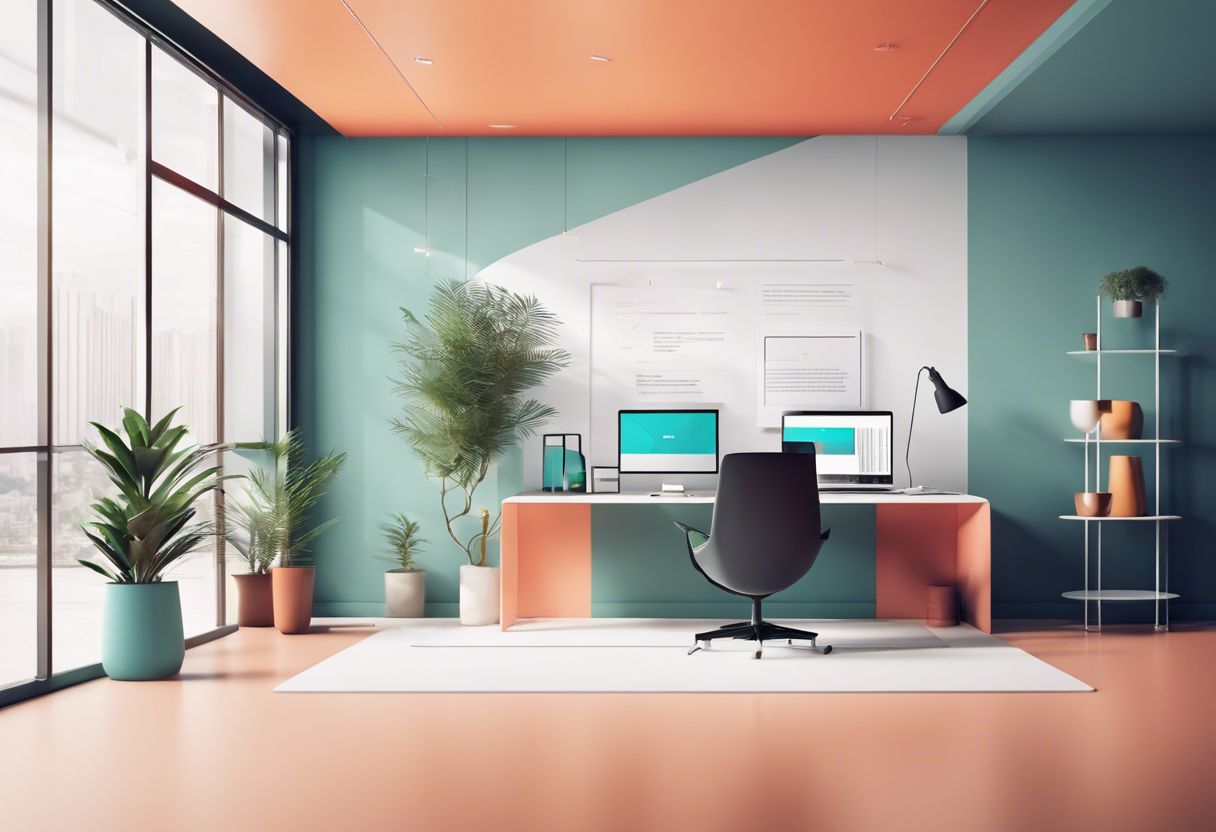
Web design is a big deal for us and our businesses. A good design helps people find what they need and understand what we do quickly. It’s like having a clean, well-organized store.
People can walk in and easily grab what they want without getting lost or confused. That’s why user-friendly design matters so much.
A website that looks great but doesn’t work well on phones or other devices might turn customers away. We make sure that everything from the menu to pictures scales down perfectly no matter where someone views it from; this is called responsive web design, and it makes sure our site is welcoming for everyone, whether they’re on a laptop at home or checking their phone while out and about.
And when visitors are ready to take action – like buy something or sign up – we have clear call-to-action buttons that stand out so folks know exactly what to do next.
Top Web Design Mistakes to Avoid

When it comes to web design, avoiding common pitfalls is crucial for establishing credibility and delivering a positive user experience. From navigation layout to color schemes and call-to-action buttons, there are several key mistakes to steer clear of in website development.
Poorly Configured Navigation Layout

We all strive for a website that guides visitors effortlessly through content. But a poorly configured navigation layout can trip them up. Imagine walking into a store with no signs – you’d leave, right? It’s the same with your website.
If users can’t find their way, they’ll click away fast. To keep people engaged, make sure your website’s layout is intuitive and easy to follow.
It’s also key to use clear communication in your site’s navigation. Keep it simple; too many options can overwhelm visitors and hide what they’re looking for. Use accessible links that stand out and lead exactly where expected – no surprises! Consistent navigation across pages lets users feel comfortable and in control of their journey through your site.
Lastly, thoughtful planning goes a long way in setting up streamlined navigation structures from the start. We want our websites not just to look good but be helpful guides too! Let’s ensure every element from colors to fonts supports an enjoyable experience for those who visit our online spaces.
Ignoring Responsive Design

Just as a ship needs a good compass to navigate the seas, a website needs excellent navigation. But even with that in place, if your site doesn’t work well on all devices, you’re going to lose your way.
Responsive design isn’t just a nice feature; it’s essential for any modern website. Without it, people using phones and tablets might see jumbled text or images that don’t fit their screens.
This can make them leave your site frustrated.
We need to ensure our websites are friendly for every device out there – from big desktop monitors to small mobile phones. Think about touchscreens too – they need bigger buttons that fingers can easily tap without error.
And we must not forget to check how fast our pages load on mobiles; slow sites will turn visitors away quickly. Always test your website across different devices and browsers. It helps catch problems early so everyone has a great experience on your site no matter what gadget they use!
Compromising User Experience for Aesthetics

Compromising user experience for aesthetics is a common mistake in web design. While it’s important to have an appealing website, focusing solely on aesthetics might lead to a poor user interface and interaction.
It can impact web usability and accessibility standards, affecting the overall performance of the website.
Neglecting accessibility and compromising user experience for aesthetics can have a significant impact on a website’s performance. Balancing visual appeal with user-friendly design is crucial for creating an effective website that meets both aesthetic and functional goals.
Overlooking Website Accessibility

We often forget about website accessibility, but it’s crucial for the success of our site. A poorly designed website can make it hard for people to use it. Many common design mistakes impact website accessibility, like confusing call-to-action buttons and unplanned landing pages.
Did you know that novice designers often overlook color contrast? This mistake affects how easily people can read the content on a website. By identifying and fixing these errors, we’ll ensure that our website is user-friendly and accessible to everyone.
It’s essential to comply with web design laws and principles to avoid these pitfalls.
Not Utilizing a Security-First Approach
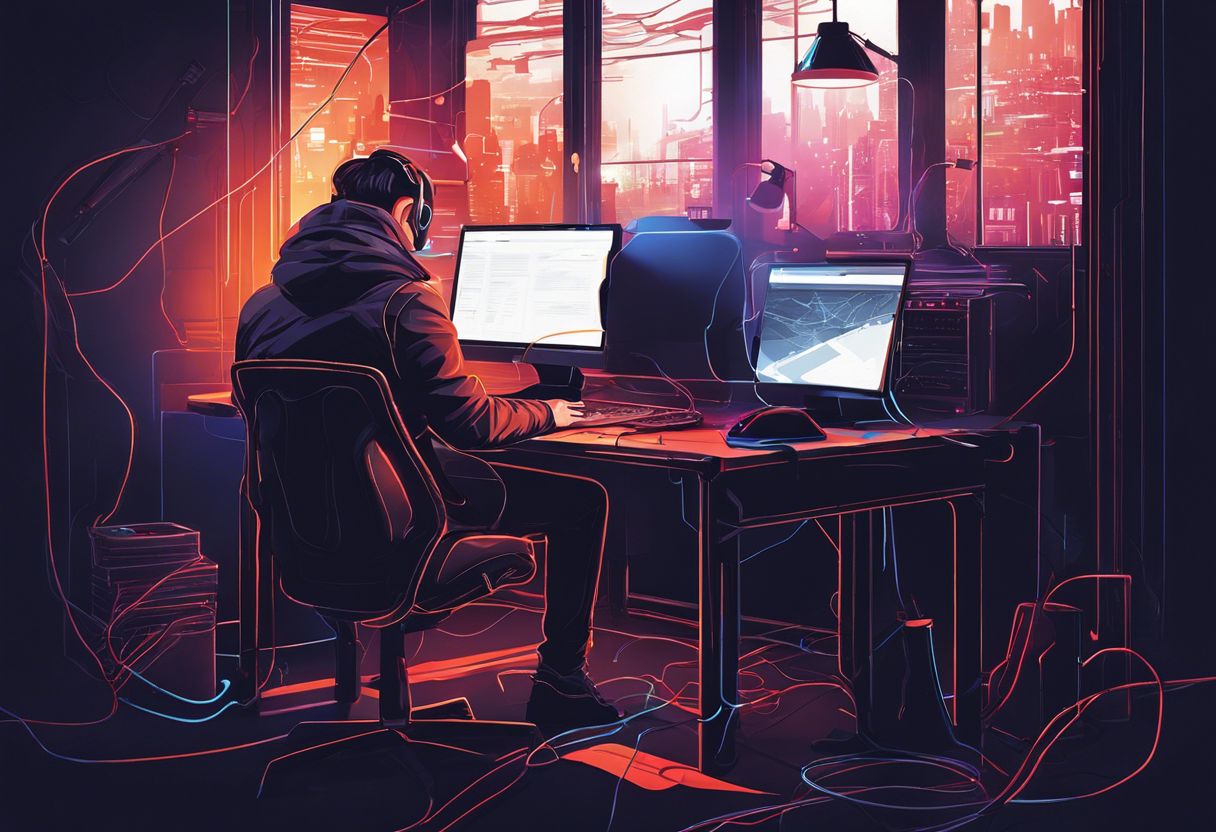
Let’s prioritize the safety of our website. Failing to use a security-first approach in web design can put our site and its users at risk. This means potential vulnerabilities and threats that could harm both our business and customers’ data.
It’s crucial to consider measures for secure coding, threat prevention, vulnerability management, and privacy protection throughout the web development process.
Cybersecurity should be at the forefront of our minds during the entire website development journey. We must focus on secure web design, data security, and online safety to ensure that our website is well-protected from any malicious activity or breaches.
Inadequate Grid and Column Use

Not utilizing a security-first approach ensures that your website is vulnerable to attacks and breaches. Inadequate grid and column use can result in poor website appearance and user experience.
This leads to unclear navigation, overloaded content, and challenges in maintaining visual hierarchy, ultimately impacting the usability of your site. Additionally, it can lead to performance issues such as slow loading times and increased bounce rates.
To ensure an optimal website appearance and user experience, we need to prioritize grid layout and column structure. It’s essential for accessible design, improving navigation clarity, reducing content overload, enhancing visual hierarchy, and optimizing the overall performance of your website.
Underestimating the Importance of Color Schemes

Choosing the right color scheme for your website is crucial. It’s not just about making it look pretty; color schemes have a real impact on how visitors feel and behave on your site.
We must understand that colors are not just random choices, they carry psychological meanings and can evoke specific emotions in people. When I’m creating a website, I always keep in mind that different colors can affect user engagement and overall aesthetics of the design.
Neglecting this aspect would be underestimating the power of visual appeal and could potentially turn away valuable customers.
Overloading Pages with Content

We understand that as small business owners, the urge to share every detail about your products or services is strong. However, overloading your web pages with excessive content can lead to user experience issues and slow down your website’s performance.
It’s important to find a balance between providing necessary information and overwhelming visitors with an excessive amount of text or media elements. Research indicates that slow loading times may deter potential customers from staying on your site, leading them to seek faster alternatives.
To prevent slowdowns in accessing vital information, it’s crucial to ensure proper hosting for your website. Additionally, fixed elements such as sticky headers might seem appealing at first but could present drawbacks related to user experience.
Thus, opting for a minimalist approach by prioritizing essential content and judiciously integrating multimedia elements can result in a more streamlined and efficient browsing experience for your audience.
Moving forward, let’s delve into how showcasing professionalism in web design enhances brand credibility and customer trust.
Unclear Call-to-Action (CTA) Buttons
-Buttons-151524820.jpg)
Therefore, as we understand the consequences of overloading pages with content, it’s crucial to shift our focus to another common pitfall: unclear call-to-action (CTA) buttons. These are essential elements that guide visitors towards taking specific actions on your website.
When CTA buttons are poorly designed or placed, they can hinder user interaction and conversion rates. It’s important to note that uncertain CTA buttons can lead to missed opportunities for engagement and sales.
Common issues with unclear CTAs include their size, placement, and number on a page. Small or excessively large buttons can be hard for users to notice or interact with effectively.
Neglecting Custom 404 Pages
Neglecting custom 404 pages on your website can harm your brand’s reputation and user experience. When visitors encounter a generic, unhelpful 404 error page, they may perceive it as neglect or unprofessionalism on your part.
This can lead to negative user perception and impact your online presence. Moreover, improper 404 pages can also affect your SEO ranking, potentially harming the visibility of your website in search engine results.
Creating custom 404 error pages that are engaging and guide users back to the main site can mitigate these issues. By doing so, you showcase professionalism, maintain user trust, and enhance your brand’s image.
Showcasing Professionalism in Web Design
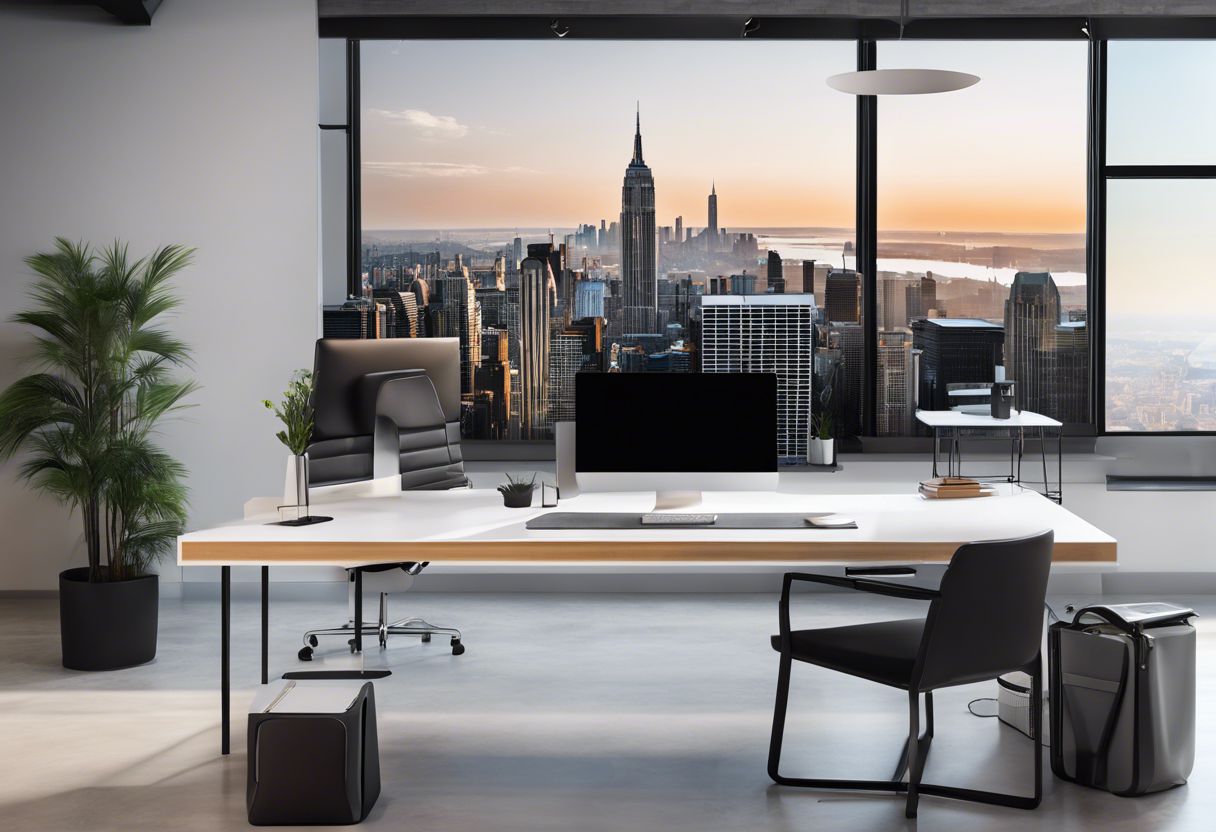
Showcasing professionalism in web design is crucial for leaving a positive impression on visitors. The visual appeal of your website design plays a significant role in how users perceive your business.
Ensuring consistency in the use of colors and fonts can contribute to a more professional appearance. Additionally, organizing your portfolio with clarity and maintaining user-friendly navigation are key elements to display professionalism through web design.
We need to prioritize mobile-friendly design, as an increasing number of users access websites from their smartphones. Maintaining an uncluttered layout and streamlining content will further enhance the sense of professionalism conveyed by your website.
By paying attention to these aspects, you can effectively showcase professionalism through web design and make a strong impact on potential customers.
Technical Pitfalls in Website Development

When it comes to technical aspects of website development, there are several common pitfalls that can hinder the performance and user experience of a website. From slow loading times to non-optimized images, these technical errors can have a significant impact on the site’s effectiveness.
Understanding and addressing these issues is crucial for creating a successful and efficient website.
Slow Web Page Loading Times
Slow web page loading times can be frustrating for users and detrimental to a business. Unoptimized images, JavaScript issues, excessive flash content, too many HTTP requests, lack of caching strategies, and network-related hosting provider issues are common culprits behind slow website loading times.
By optimizing images through compression, addressing JavaScript problems, minimizing flash content, reducing HTTP requests, implementing effective caching strategies, and ensuring reliable hosting providers with adequate network performance measures in place, these technical pitfalls can be minimized or eliminated.
Website speed optimization is crucial for user experience and search engine rankings. By prioritizing efficient website performance analysis and adopting cross-browser compatibility alongside proper image compression techniques while also managing JavaScript optimization effectively these challenges can be mitigated or resolved.
Non-Optimized Images and Multimedia
Optimizing images is crucial for a website’s performance. Unoptimized graphics and suboptimal multimedia can slow down the loading times, affecting user experience and search engine rankings.
Non-optimized visuals, such as unoptimized photos and videos, hinder the efficient functioning of a website. Therefore, it’s important to prioritize optimizing all web images and multimedia content to ensure an effective website development process.
Inefficient website design caused by subpar media integration can result in poor user engagement and reduced conversions. Recognizing the significance of efficient multimedia integration is essential for achieving a high-performing website that delivers an optimal user experience across various devices.
Features That Don’t Lead to Conversions
Using unnecessary features on your website can hinder conversion rates. These may include complex animations, too many pop-ups, or excessive use of multimedia that slows down the page.
Remember, a cluttered and slow website often drives customers away instead of engaging them. It’s important to focus on functionalities that directly lead visitors towards taking action.
Optimizing your website for user inclusivity is essential in not only maintaining consistent branding but also improving user engagement and accessibility standards. By streamlining the design to enhance usability and ensuring call-to-action buttons are clear and compelling, you can significantly boost conversion rates while creating an inclusive experience for all users.
Lack of Cross Browser Compatibility
When features on a website don’t lead to conversions, it’s crucial to ensure that the site is accessible and functions seamlessly across different web browsers. This brings us to the critical issue of cross-browser compatibility.
A key technical pitfall in website development is the lack of proper testing for how websites appear and function across various web browsers. Skipping this step can result in frustrating user experiences and lost business opportunities.
Compatibility issues arise when modern web layouts are not supported by certain browsers, leading to potential loss of functionality or visual discrepancies. Additionally, non-responsive designs can compound these problems, making it essential for small business owners to address browser compatibility as part of their technical considerations during website development.
Design Thinking and Its Role in Avoiding Mistakes

Incorporating a design thinking approach can help web designers understand the needs and preferences of their target audience, leading to more user-friendly and effective website designs.
Prioritizing grid and columns for structure, as well as carefully selecting trending web design templates, can also contribute to creating a successful website that avoids common pitfalls in development.
Incorporating Design Thinking Approach
Incorporating a design thinking approach into website development involves creatively solving problems by focusing on the needs of the users. It is an iterative process that encourages innovation and empathetic design, where we constantly test and refine prototypes to ensure a human-centered approach.
Through co-creation and collaborative problem-solving, we prioritize user experience by embracing uncertainty and learning from failures to create better websites.
By incorporating design thinking, we can develop websites that are not only aesthetically pleasing but also highly functional, meeting the specific needs of our target audience. This approach allows us to innovate and create websites that truly resonate with our users, setting us apart in the competitive online landscape.
Prioritizing Grid and Columns for Structure
When it comes to structuring a website, prioritizing grid and columns is essential for maintaining an organized layout. By using the grid as a framework, we can efficiently arrange content and design elements in a visually appealing manner.
This strategic approach not only enhances the overall user experience but also ensures that information is presented in a clear and structured way, aligning with the principles of user-centric design and visual hierarchy.
Prioritization techniques within grids facilitate easier navigation and help users quickly find what they are looking for, contributing to improved usability.
In addition to grid organization, strategically implementing column layouts can further enhance the structure of a website. Columns provide an effective way to segment content, allowing for better readability while also creating opportunities to highlight key information or calls-to-action prominently.
Selecting Trending Web Design Templates Wisely
When selecting web design templates, it’s vital to consider the brand identity and target audience. Prebuilt templates from marketplaces can save time and prevent design errors in web development.
However, blindly following trends may lead to pitfalls. It’s crucial to choose templates that align with the brand’s image and cater to the specific needs of the target audience.
We should prioritize a balance between trendy designs and timeless elements that reflect our brand identity. By considering these factors while selecting web design templates, we ensure that our website not only looks appealing but also resonates with our audience on a deeper level, fostering trust and engagement.
SEO and Analytics Considerations
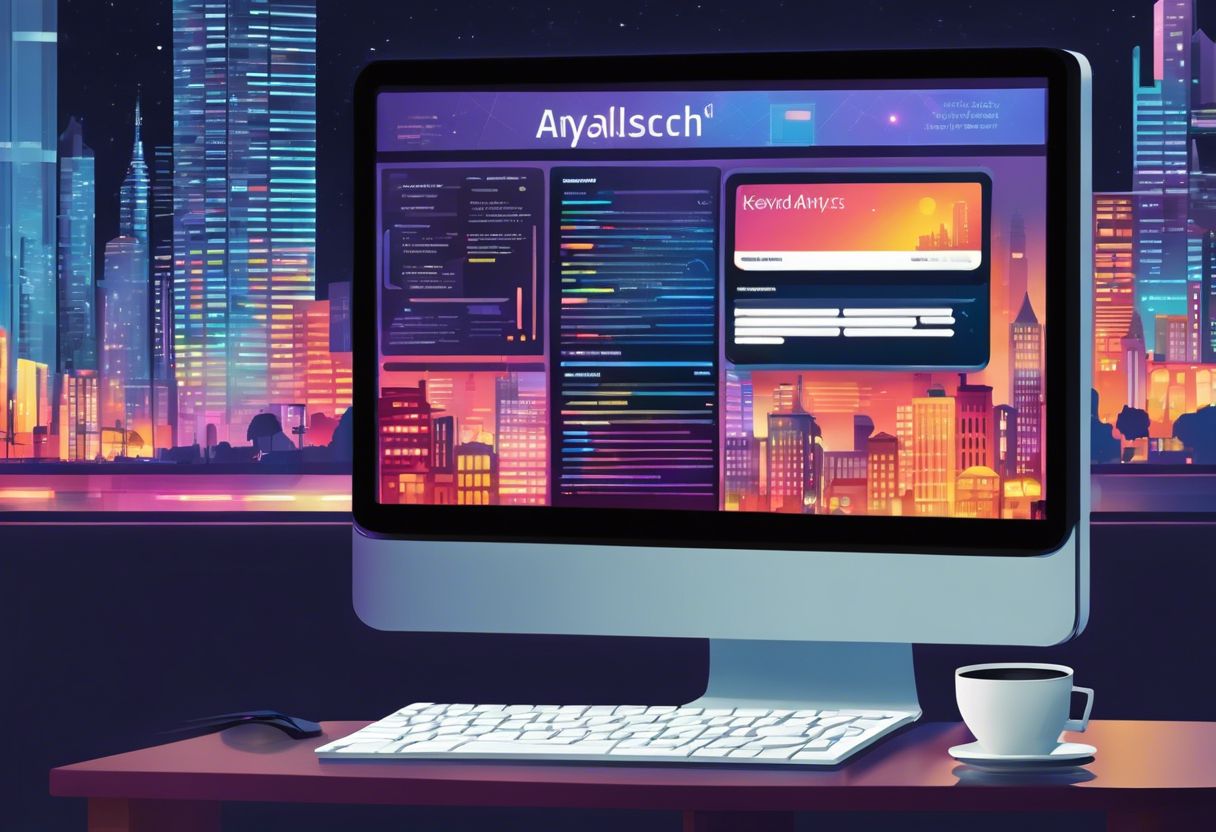
When it comes to website development, it’s crucial to not overlook the significance of SEO and analytics. Optimizing your website for niche keywords and leveraging web analytics can provide valuable insights into user behavior, allowing you to make informed decisions that lead to improved performance and visibility in search engine results.
Not Optimizing for Niche Keywords
We understand the value of using the right keywords to attract visitors to your website. Neglecting keyword research and not optimizing for niche keywords can result in missing out on potential organic traffic.
It’s important to conduct thorough keyword research, including long-tail keywords that cater to specific user intent. By targeting relevant keywords in your digital content, you can effectively reach your intended audience and improve your website’s visibility on search engines.
Additionally, understanding search engine preferences for targeted keywords is crucial for attracting organic traffic. Utilizing the appropriate longtail keywords aligns with user intent, leading to improved visibility and better engagement on your website.
This ensures that when users search for specific products or services related to your business, they are more likely to find and visit your website, driving valuable traffic.
Not Leveraging Web Analytics for Insights
When it comes to SEO and analytics considerations in website development, not leveraging web analytics for insights can be a critical mistake. Many small business owners overlook the valuable data analysis that web analytics provide, which can ultimately impact their online presence and digital marketing efforts.
Data from web analytics can offer essential performance metrics such as user engagement, traffic analysis, and conversion rate optimization. Without tapping into this information, businesses may miss out on understanding user behavior and making informed decisions to enhance their website’s effectiveness.
Neglecting web analytics also means overlooking opportunities to improve the overall user experience on their websites. By analyzing the data provided by web analytics tools, small business owners can gain valuable insights into how users interact with their site, allowing them to make strategic adjustments that will positively impact their online presence and performance metrics.
Multilingual and Multicultural Design Challenges

Designing for a global audience poses unique challenges, including the need to cater to multiple languages and cultural preferences. Building websites that effectively communicate across different linguistic and cultural barriers is essential in today’s interconnected digital landscape.
Designing for a Global Audience
When designing for a global audience, we focus on creating a website that resonates with diverse cultures and languages. It’s crucial to understand the impact of cultural differences on content and design choices.
Cultural sensitivity is key when catering to multicultural audiences. We must research and comprehend the general cultural differences, as well as the specific requirements of each language group.
Considering users’ cultural backgrounds is paramount in global designs. We need to ensure that our websites are inclusive, catering to non-native speakers by using clear and concise language.
Furthermore, brand consistency plays a significant role in managing multilingual websites, amplifying global messaging while maintaining uniformity across different language versions.
Building Websites for Multiple Languages
When it comes to expanding your online presence to cater to a global audience, building multilingual websites is key. We understand that designing for diverse language needs can be daunting, but it’s essential for reaching international markets effectively and connecting with a broader range of potential customers.
While venturing into this territory, remember that neglecting multilingual website development could lead to content geolocation issuesand hinder SEO optimization efforts.
It’s crucial not to overlook the importance of accurate translations and localization strategies when targeting different language audiences. Avoiding reliance on automated translation tools is vital in ensuring translation accuracy and preserving the integrity of your brand message across various languages.
Conclusion

In conclusion, steering clear of common website design mistakes is crucial for creating a successful and user-friendly website. By prioritizing accessibility, ensuring fast loading times, and providing clear calls-to-action, businesses can build credibility and enhance user experience.
It’s important to embrace a security-first approach, optimize for niche keywords, and leverage web analytics for valuable insights. Ultimately, avoiding these pitfalls will not only showcase professionalism but also drive conversions and improve overall website performance.
FAQs
1. What are some common mistakes in website development to avoid?
Common mistakes in website development include neglecting mobile responsiveness, poor navigation structure, slow loading speed, and inadequate security measures.
2. How can I ensure my website is mobile responsive?
To ensure mobile responsiveness, use a responsive design framework and test your website on various devices to confirm that it displays and functions well across different screen sizes.
3. Why is having a clear navigation structure important for a website?
A clear navigation structure helps users easily find information on your site, enhancing user experience and reducing bounce rates.
4. What can I do to improve the loading speed of my website?
You can improve the loading speed of your website by optimizing images, using caching mechanisms, minimizing HTTP requests, and choosing reliable hosting services.
5. How crucial is it to prioritize security in website development?
Prioritizing security in website development is crucial as it protects both your business and users from potential cyber threats such as data breaches or hacking attempts.


